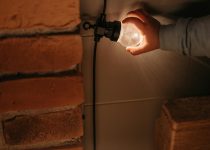Will Patio Pavers Settle
Are you wondering if your patio pavers will settle? Well, you’ve come to the right place!
In this article, we will explore the common causes of patio paver settlement, signs to look out for, and steps to prevent it.
We will also discuss how climate affects paver settlement and provide tips for repairing settled pavers.
Whether you’re a DIY enthusiast or considering professional help, we’ve got you covered.
Stay tuned for long-term maintenance tips to ensure your patio pavers stay stable for years to come.
Table of Contents
Key Takeaways
- Patio paver settlement can be caused by poor installation techniques, improper base preparation, insufficient compaction of base material, and inadequate edge restraints.
- Signs of patio paver settlement include an uneven surface, paver movement or shifting, water accumulation on the patio, tripping hazards, and the growth of mold or mildew.
- To prevent and repair patio paver settlement, it is important to ensure proper base compaction and leveling, use geotextile fabric for added stability, regularly inspect and fix any issues with pavers, ensure proper drainage, and fill gaps between pavers with joint or polymeric sand.
- Climate factors such as temperature fluctuations, excessive moisture, freeze-thaw cycles, poor drainage, and high temperatures can contribute to patio paver settlement.
Common Causes of Patio Paver Settlement
You should know that common causes of patio paver settlement include poor installation and improper base preparation. When the pavers are not installed properly, they become vulnerable to displacement. This can happen due to a variety of factors, such as insufficient compaction of the base material or inadequate edge restraints.
Another significant cause of paver settlement is soil erosion. When the soil underneath the pavers erodes, it creates voids and gaps, leading to the pavers sinking or shifting. This erosion can occur due to heavy rain, poor drainage, or improper grading.
The effects of soil erosion on patio pavers are detrimental, as it compromises their stability and can result in an uneven surface. Therefore, it is crucial to address these causes to prevent paver displacement and maintain the integrity of your patio.
Signs and Symptoms of Settling Patio Pavers
There are common signs and symptoms to look out for when patio pavers start to settle. Here are three important ones to keep in mind:
-
Uneven Surface: One of the first signs that your patio pavers may be settling is an uneven surface. You may notice that certain areas of your patio feel higher or lower than others when walking on them. This can create a tripping hazard and make your patio less enjoyable to use.
-
Paver Movement: Another indicator of settling pavers is movement. If you see that individual pavers are shifting or tilting, it is likely due to settling. This can occur when the base underneath the pavers becomes unstable or erodes over time.
-
Water Accumulation: Lastly, excessive water accumulation on your patio can be a sign of paver sinking. When pavers settle, they can create low spots where water collects. This can lead to water damage and the growth of mold or mildew.
To prevent paver sinking and deal with uneven pavers, it is important to address the underlying causes of settling. This may involve repairing or reinforcing the base, leveling the pavers, or seeking professional help if the issue is severe.
How to Prevent Patio Paver Settlement
To prevent settlement of your patio pavers, it’s important to address the underlying causes and take prompt action.
Start by ensuring a solid foundation for your pavers. Make sure the base is properly compacted and leveled. This will help prevent shifting and settling. Additionally, consider using a geotextile fabric underneath the base material to provide added stability.
Regularly inspect your pavers for any signs of movement or gaps between them. If you notice any issues, fix them immediately to prevent further shifting.
Proper drainage is also crucial in maintaining paver stability. Ensure that water is directed away from the pavers to prevent erosion and settling.
Finally, consider using joint sand or polymeric sand to fill the gaps between the pavers. This will help lock them in place and prevent shifting.
Understanding the Effects of Climate on Patio Paver Settlement
Understanding the effects of climate on your patio paver stability is crucial in preventing potential settlement. Here are three key factors to consider:
-
Temperature: Extreme temperature fluctuations can cause patio paver materials to expand and contract. This constant movement can lead to settlement over time. High temperatures can also cause the pavers to soften and lose their structural integrity.
-
Moisture: Excessive moisture can weaken the base material beneath the pavers, causing it to shift and settle. Freeze-thaw cycles during colder months can also contribute to settlement, as water expands when it freezes and contracts when it thaws.
-
Drainage: Poor drainage can result in water pooling around the pavers, causing the base material to erode and settle unevenly. It is important to ensure proper slope and drainage to prevent this issue.
Steps to Repair Settled Patio Pavers
By following these steps, you can quickly repair settled patio pavers.
First, assess the extent of the settlement to determine the necessary repairs.
Next, remove any loose or damaged pavers from the affected area.
Once the area is cleared, use a level to check the alignment of the surrounding pavers. If realignment is needed, gently tap the pavers with a rubber mallet to adjust their position.
If the settlement is significant, you may need to add a layer of sand or gravel to even out the surface before replacing the pavers.
Finally, fill the gaps between the pavers with sand or polymeric sand and compact it using a tamper.
Following these repair methods will ensure that your patio pavers are back in good shape.
Importance of Proper Base Preparation to Avoid Patio Paver Settlement
Proper base preparation is essential for preventing settlement of patio pavers. When preparing the base for your patio, keep these three key factors in mind:
-
Compaction: Ensure that the ground is properly compacted before laying the base materials. This will create a solid foundation and minimize the risk of settlement.
-
Drainage: Proper drainage is crucial to prevent water from accumulating under the pavers. Install a layer of gravel or crushed stone to promote water runoff and avoid potential settling issues.
-
Leveling: Take the time to level the base material accurately. Uneven surfaces can lead to uneven settling of the pavers over time. Use a level and a straightedge to achieve a smooth and level base.
Professional Vs. DIY Solutions for Settling Patio Pavers
If you’re considering a professional solution for your settling patio pavers, it’s important to weigh the advantages and potential cost against the option of tackling the project yourself. Here is a comparison between professional installation and DIY troubleshooting:
| Professional Installation | DIY Troubleshooting |
|---|---|
| Experienced experts who specialize in paver installation | You take charge of the entire project |
| Saves time and effort | Requires time and effort on your part |
| Guarantees proper installation and long-lasting results | Potential for mistakes and need for troubleshooting |
| Ensures proper equipment and materials are used | You may need to invest in tools and supplies |
While professional installation offers convenience and expertise, it can be costly. On the other hand, DIY troubleshooting allows you to save money, but you need to invest time and effort into the project. Consider your budget, skills, and available time before making a decision.
Long-Term Maintenance Tips for Patio Paver Stability
To ensure the long-term stability of your patio pavers, there are a few key points you should consider.
First, preventing paver sinking can be achieved by properly compacting the base and using a quality adhesive during installation.
Second, enhancing paver durability can be done by applying a sealant to protect against water damage and regular cleaning to prevent buildup.
Lastly, dealing with shifting pavers can be addressed by periodically checking and adjusting the sand or gravel between the pavers to maintain proper level and alignment.
Preventing Paver Sinking
You can prevent paver sinking by regularly inspecting the base for any signs of erosion or settling. This will help you maintain stability and ensure that your patio pavers stay in place for a long time. Here are three important steps to follow:
-
Check for any signs of erosion by examining the area around the pavers. Look for gaps or spaces between the pavers, as well as any signs of soil erosion or washout.
-
If you notice any settling or unevenness in the pavers, take immediate action. Use a level to check the surface and make sure it is even. If needed, add more base material and compact it properly to restore stability.
-
Regularly clean and maintain the pavers to prevent any potential issues. Remove any debris or dirt that may accumulate between the pavers, as this can cause instability over time.
Enhancing Paver Durability
Now that you know how to prevent paver sinking, let’s focus on enhancing the durability and aesthetics of your patio pavers.
One important factor to consider is choosing the right paver size. The size of the pavers can greatly impact the overall look and feel of your patio. Larger pavers can create a sense of openness and unity, while smaller pavers can add intricate details and patterns. Consider the size of your outdoor space and the style you want to achieve when selecting the paver size.
Additionally, choosing pavers with a textured surface can enhance their durability and reduce the risk of slipping. By carefully choosing the right paver size and texture, you can create a stunning and long-lasting patio.
Dealing With Shifting Pavers
When pavers shift, it is important to address the issue promptly to prevent further damage to your patio. Shifting pavers can occur due to various reasons such as improper installation, poor base preparation, or soil erosion.
Here are three key causes and solutions to consider:
-
Poor Base Preparation: If the base beneath your pavers is not properly compacted or lacks sufficient depth, it can lead to shifting. To fix this, remove the affected pavers, re-level the base, and reinstall them using proper compaction techniques.
-
Soil Erosion: Water runoff or inadequate drainage can cause the soil beneath the pavers to erode, leading to instability. To prevent this, ensure proper grading and install a drainage system to direct water away from the patio area.
-
Climate Changes: Freeze-thaw cycles can cause pavers to shift over time. Consider using polymeric sand or applying a sealant to help stabilize the pavers and minimize shifting.
Ignoring shifting pavers can result in risks and consequences such as tripping hazards, uneven surfaces, and further damage to your patio. Addressing the issue promptly will help maintain the integrity and safety of your outdoor space.
Frequently Asked Questions
Can Patio Pavers Settle Unevenly?
Yes, patio pavers can settle unevenly over time. This can lead to a variety of issues such as tripping hazards and water pooling. It’s important to properly prepare the base and maintain the pavers to minimize these long-term effects.
What Are the Potential Dangers of Patio Paver Settlement?
To prevent potential dangers of patio paver settlement, be aware of signs indicating uneven settling. Look out for cracks, sinking, or uneven surfaces. Proper installation, compacted base, and regular maintenance can help prevent settlement.
Are There Any Temporary Solutions for Settled Patio Pavers?
To temporarily fix settled patio pavers, you can try some DIY repairs. These solutions include adding more sand, using a rubber mallet to level the pavers, or lifting and repositioning them.
Can Patio Paver Settlement Lead to Structural Damage?
Patio paver settlement can potentially lead to structural damage. Look out for signs like uneven surfaces, gaps, or sinking pavers. Potential causes include poor installation, inadequate base, or soil erosion.
Is It Necessary to Hire a Professional for Patio Paver Repair or Can It Be Done as a DIY Project?
It’s important to consider whether hiring a professional or doing patio paver repair as a DIY project is the best option for you. Both options have cost-effective solutions, so weigh the pros and cons before making a decision.



